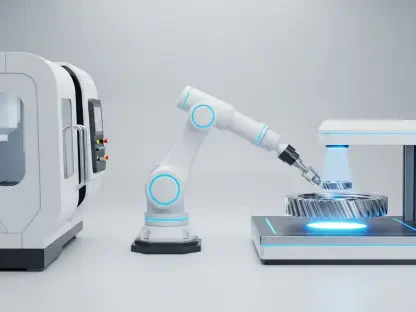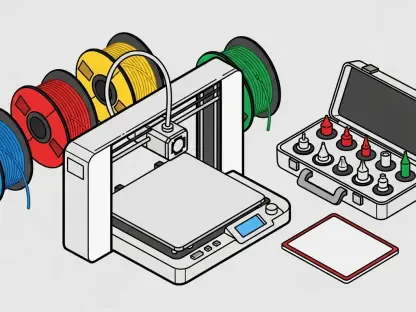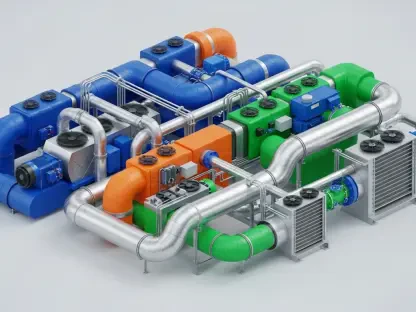Introduction
Imagine a silent intruder slipping through the digital backdoor of a nation’s power grid or water treatment plant, undetected for months, mapping every system and waiting for the perfect moment to strike. This is no longer a hypothetical scenario but a chilling reality as covert adversaries increasingly target critical infrastructure with sophisticated, stealthy cyberattacks that threaten public safety, economic stability, and national security. These threats, often orchestrated by state-sponsored groups, pose a significant risk, particularly in sectors like manufacturing where operational technology (OT) systems are vital yet vulnerable. The importance of understanding these dangers cannot be overstated, as the consequences of a breach could disrupt essential services on a massive scale.
This FAQ article aims to address the most pressing questions surrounding how covert adversaries are infiltrating critical infrastructure and what can be done to mitigate these risks. It explores the nature of these threats, the specific vulnerabilities they exploit, and actionable strategies for enhancing defenses. Readers can expect to gain a clear understanding of the evolving cyber landscape, the limitations of traditional security measures, and the critical need for advanced visibility and monitoring to protect vital systems from unseen dangers.
The scope of this discussion focuses on industrial environments, particularly manufacturing, where the convergence of IT and OT systems creates unique challenges. By breaking down complex concepts into accessible answers, this content seeks to equip stakeholders with the knowledge needed to recognize and respond to these insidious threats. Each section delves into a specific aspect of the issue, offering insights grounded in real-world examples and expert consensus to ensure a comprehensive grasp of the topic.
Key Questions or Key Topics
What Are the Evolving Tactics of Covert Adversaries?
Covert adversaries have shifted from loud, disruptive cyberattacks like ransomware to more subtle, long-term operations that prioritize stealth over immediate impact. Unlike attacks designed to cause instant chaos, these threats focus on intelligence gathering, system mapping, and establishing persistent access within critical infrastructure networks. This slow-burn approach allows attackers to remain hidden for extended periods, often evading detection by blending into normal system activities.
A notable example is a state-sponsored campaign linked to China, uncovered a couple of years ago, which targeted U.S. critical infrastructure, including manufacturing sectors. This group employed “living off the land” techniques, using legitimate tools like PowerShell to mimic routine operations, making their presence nearly invisible to standard security measures. Such tactics represent a “silent drift” beneath the surface, where no alarms are triggered, and traditional error codes fail to flag any issues, posing a severe challenge to defenders.
The significance of this evolution lies in its implications for national security and economic stability. As adversaries refine their methods to avoid detection, critical infrastructure operators must adapt by recognizing that the absence of overt disruption does not equate to safety. Understanding these tactics is the first step toward building defenses capable of identifying and neutralizing threats before they escalate into catastrophic breaches.
Why Are Industrial Networks So Vulnerable to Covert Threats?
Industrial networks, especially those relying on operational technology, are inherently susceptible to covert attacks due to their historical design and structural limitations. Many industrial control systems (ICS) were developed decades ago when cybersecurity was not a primary concern, focusing instead on physical access restrictions. This outdated framework leaves significant gaps that modern adversaries can exploit with ease.
Compounding the issue, legacy systems often cannot be updated or patched without risking costly downtime or operational failures, leaving known vulnerabilities unaddressed for years. Flat network architectures in many industrial environments also allow attackers to move laterally once inside, gaining access to critical components with minimal resistance. Additionally, proprietary protocols used in OT systems, such as Modbus or DNP3, are often unreadable by standard IT security tools, creating blind spots in monitoring efforts.
Further vulnerabilities stem from overlooked entry points like misconfigured routers or unsecured remote access tools, which provide initial footholds for attackers. The convergence of personal devices and unmanaged systems within these networks only widens the attack surface. Addressing these weaknesses requires a fundamental rethinking of security priorities, focusing on both technological upgrades and procedural safeguards to close exploitable gaps.
Why Do Traditional Security Tools Fail Against Covert Adversaries?
Traditional security tools, such as endpoint detection software and north-south firewalls, are often inadequate for countering covert threats in industrial settings. These tools are primarily designed for IT environments and struggle to adapt to the unique demands of OT hardware, where performance constraints or vendor restrictions limit their deployment. Even when implemented, they pose compatibility issues that can disrupt critical operations if not carefully managed.
More critically, these conventional defenses are built to detect known threats like malware or unauthorized file changes, rendering them ineffective against adversaries using valid credentials or legitimate administrative tools. For instance, in campaigns where attackers leverage built-in system functions, no malicious code is introduced, leaving antivirus software and similar measures blind to the intrusion. This gap highlights a fundamental mismatch between the tools’ capabilities and the nature of modern threats.
The analogy of installing motion-sensor lights while leaving doors unlocked aptly describes this incomplete approach. Without the ability to monitor OT-specific protocols or detect anomalies in internal traffic, traditional tools fail to provide a comprehensive defense. This limitation underscores the urgent need for alternative strategies that prioritize deeper visibility into network behaviors rather than relying solely on perimeter-based or signature-driven solutions.
How Can Network-Level Visibility Help Detect Covert Threats?
Network-level visibility offers a promising solution to the challenge of detecting covert adversaries by focusing on east-west traffic—communications between internal systems—rather than just incoming and outgoing data. This approach involves passively capturing traffic at critical points, analyzing protocols, and establishing behavioral baselines to identify deviations that may indicate a threat. Unlike endpoint tools, it does not require installing agents on fragile legacy systems, making it a practical fit for both IT and OT environments.
Specific anomalies to monitor include unusual activity patterns, such as a workstation initiating ICS protocol traffic during off-hours or unexpected command sequences across systems. By comparing real-time data against established norms, defenders can spot subtle signs of compromise that evade traditional detection methods. This method mirrors quality control principles in manufacturing, where deviations from the standard are flagged before they become major issues, providing a proactive rather than reactive defense.
The value of this strategy lies in its ability to uncover threats that blend into routine operations, offering a non-intrusive way to safeguard critical infrastructure. While not a complete solution on its own, network monitoring serves as a foundational layer of defense, enabling quicker identification and response to covert activities. Adopting such measures can significantly shrink visibility gaps, ensuring that even the most stealthy adversaries are brought to light before causing harm.
What Challenges Do Hybrid IT/OT Environments Pose?
The integration of IT and OT systems in modern manufacturing has enhanced operational efficiency but also expanded the attack surface for covert adversaries. Hybrid environments, incorporating cloud platforms and remote access tools alongside traditional industrial systems, create new risks by blurring the boundaries between previously segregated domains. This convergence often results in visibility silos, where neither IT nor OT teams have a full picture of the network’s security posture.
A key challenge is the potential for lateral movement between IT and OT boundaries, allowing attackers to exploit interconnected systems to reach critical assets. For example, a breach in a corporate IT system could provide a pathway to industrial controls if proper segmentation and monitoring are lacking. The lack of a unified security language between IT and OT teams further complicates efforts to correlate events and detect threats across domains.
Addressing these challenges requires breaking down silos through integrated visibility and fostering collaboration between teams to map and monitor traffic across the entire environment. Without such efforts, blind spots persist, giving adversaries opportunities to exploit the interconnected nature of hybrid systems. Prioritizing cross-domain detection strategies is essential to ensure that the benefits of integration do not come at the cost of heightened vulnerability.
Summary or Recap
This article addresses the multifaceted threat posed by covert adversaries to critical infrastructure, particularly within industrial sectors like manufacturing. Key insights include the shift toward stealthy, long-term cyberattacks that prioritize persistent access over immediate disruption, as well as the inherent vulnerabilities of OT systems due to outdated designs and unpatchable flaws. The inadequacy of traditional security tools in detecting protocol-specific or credential-based attacks is a recurring theme, highlighting the need for alternative approaches.
Network-level visibility stands out as a critical defense mechanism, focusing on internal traffic monitoring and anomaly detection to uncover hidden threats. The complexities of hybrid IT/OT environments also emerge as a significant concern, necessitating unified strategies to eliminate blind spots across domains. These takeaways underscore the urgency of adapting cybersecurity practices to match the sophistication of modern adversaries.
For readers seeking deeper exploration, additional resources on industrial cybersecurity frameworks and network monitoring tools are recommended. Reports from government agencies and industry consortiums often provide detailed guidance on best practices for securing critical infrastructure. Engaging with these materials can further enhance understanding and preparedness against evolving cyber risks.
Conclusion or Final Thoughts
Looking back, the discussion revealed a landscape where covert adversaries have exploited systemic weaknesses in critical infrastructure with alarming precision, necessitating an urgent shift in defensive strategies. The exploration of stealth tactics, vulnerable industrial networks, and the shortcomings of conventional tools painted a sobering picture of the challenges faced by sectors like manufacturing. Each answered question contributed to a broader understanding of how these threats operate beneath the surface, often undetected until significant damage is imminent.
Moving forward, a practical next step involves investing in network-centric monitoring solutions to gain visibility into internal traffic and establish behavioral baselines for anomaly detection. Collaboration between IT and OT teams must be prioritized to address the risks of hybrid environments, ensuring comprehensive coverage across all systems. Stakeholders are encouraged to assess their current security posture against these insights, identifying gaps and implementing layered defenses to stay ahead of adversaries.
Reflecting on this topic, consider how these threats might impact specific operations or local infrastructure. Evaluating the readiness of systems under direct control or influence can reveal actionable areas for improvement. By taking proactive measures now, the devastating potential of covert cyberattacks can be mitigated, safeguarding essential services and maintaining trust in the resilience of critical networks.









